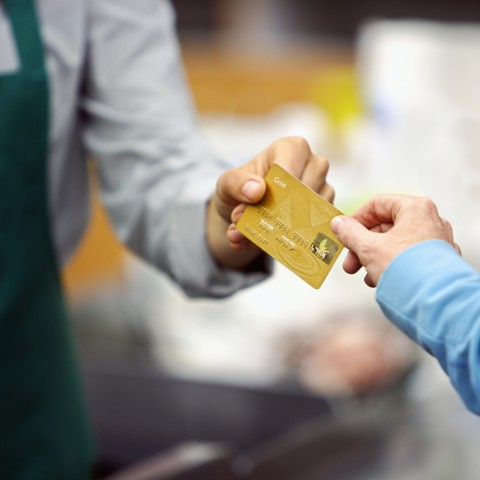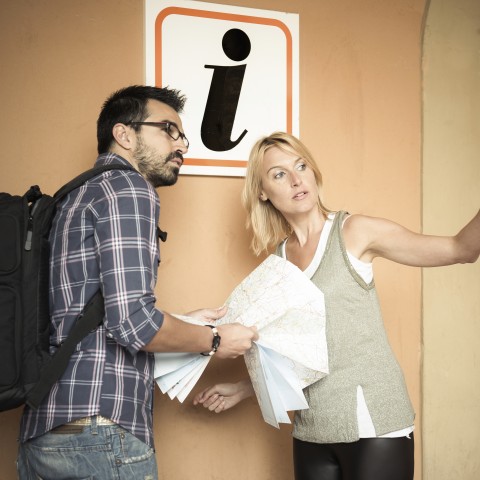
When you start learning any foreign language, it can be a little overwhelming as there’s a lot to learn and remember. It can be especially discouraging if your progress is slow at the beginning. Here’s a shortcut for you:
We have prepared a comprehensive guide to basic Thai phrases for beginners. You can use these phrases in a variety of situations; this makes them useful for language learners, travelers, or those who have just moved to Thailand and speak only a little Thai.
Let’s start learning the essential beginner phrases in the Thai language.
 Table of Contents
Table of Contents
- Thai Grammar Rules You Should Know
- Basic Thai Greetings and Self-introductions
- Thai Courtesy Phrases and Social Expressions
- Basic Thai Phrases for Dining
- Basic Thai Phrases for Shopping
- Basic Thai Phrases for Getting Help
- Conclusion
1. Thai Grammar Rules You Should Know
There are a couple of grammar rules we need to cover before diving into our list. Keeping these rules in mind will make it easier for you to memorize and correctly use the Thai phrases for beginners introduced in this article.
1 – Male
Pronoun: ผม (phǒm) is the singular first person pronoun (“I”) for males.
Ending particle: ครับ (khráp) is an ending particle for males, used when the speaker wants to make the sentence polite.
2 – Female
Pronoun: ฉัน (chǎn) is the singular first person pronoun (“I”) for females.
Ending particle: ค่ะ (khâ) is an ending particle for females, used when the speaker wants to make the sentence polite.
2. Basic Thai Greetings and Self-introductions
Our first set of basic Thai-language phrases for beginners consists of different ways to greet others and introduce yourself.
1 – สวัสดี
Pronunciation: sà-wàt-dii
English: Hello. / Hi.
สวัสดี (sà-wàt-dii) is the basic greeting word in Thai, though it can also mean “goodbye.” Thai people use this word at any time of day when greeting or parting ways. In formal situations, they say สวัสดี (sà-wàt-dii) while doing the action called ไหว้ (wâi).
2 – subject + ชื่อ + ___ (name) + ending particle
Pronunciation: subject + chûue + ___ (name) + ending particle
English: My name is ___ (name).
The structure of this sentence is quite simple. When you introduce yourself, you just have to be careful to use the correct subject and ending particle according to your gender.
3 – ยินดีที่ได้รู้จัก
Pronunciation: yin-dii-thîi-dâi-rúu-jàk
English: Nice to meet you.
Thai people use this phrase when they’re meeting someone new. In addition, you could say this to someone you’re meeting for the first time through online meetings or email (rather than in person).
4 – ยินดีที่ได้พบ
Pronunciation: yin-dii-thîi-dâi-phóp
English: Nice to meet you.
This phrase is similar to the one above, but you would use it only once you finally get to meet the person for the first time (in person).
5 – subject + มาจาก + ประเทศ ___ (name of country) + ending particle
Pronunciation: subject + maa-jàak + bprà-thêet ___ (name of country) + ending particle
English: I’m from ___ (name of country).
This is another useful sentence structure you can use in self-introductions. Again, just remember to use the correct subject and ending particle, and you’ll be fine.
6 – คุณสบายดีไหม
Pronunciation: khun-sà-baai-dii-mǎi
English: How are you?
Asking about the other party is a formal way to start a conversation. Since you would use this phrase in formal situations, don’t forget to add the appropriate ending particle (ครับ – khráp or ค่ะ – khâ) to the end of the sentence as well.
7 – เป็นยังไงบ้าง
Pronunciation: bpen-yang-ngai-bâang
English: How are you?
This phrase has the same meaning as the one above. The difference is that you would use this phrase in a casual conversation.
8 – Example 1
นารา: สวัสดีค่ะ ฉันชื่อนาราค่ะ
naa-raa: sà-wàt-dii-khâ chǎn-chûue-naa-raa-khâ
Nara: Hello, my name is Nara.
ไมค์: สวัสดีครับ ผมชื่อไมค์ครับ คุณมาจากประเทศอะไรครับ
mái: sà-wàt-dii-khráp phǒm-chûue-mái-khráp khun-maa-jàak-bprà-thêet-à-rai-khráp
Mike: Hi, my name is Mike. Where are you from?
นารา: ฉันมาจากประเทศไทยค่ะ แล้วคุณหละคะ
naa-raa: chǎn-maa-jàak-bprà-thêet-thai-khâ láaeo-khun-là-khá
Nara: I come from Thailand, what about you?
ไมค์: ผมมาจากประเทศแคนาดาครับ ยินดีที่ได้รู้จักครับ
mái: phǒm-maa-jàak-bprà-thêet-khaae-naa-daa-khráp yin-dii-thîi-dâi-rúu-jàk-khráp
Mike: I come from Canada. Nice to meet you.
นารา: ยินดีที่ได้รู้จักคุณเช่นกันค่ะ
naa-raa: yin-dii-thîi-dâi-rúu-jàk-khun-chên-gan-khâ
Nara: Nice to meet you as well.

Hello, my name is Nara.
9 – Example 2
มานพ: คุณชื่อเดวิดรึเปล่าครับ ผมมานพครับ เราคุยกับเมื่อวันก่อนทางอีเมล ยินดีที่ได้พบครับ
maa-nóp: khun-chûue-dee-wìt-rúe-bplào-khráp phǒm-maa-nóp-khráp rao-khui-gan-thaang-ii-meeo-mûuea- wan-gàawn yin-dii-thîi-dâi-phóp-khráp
Manop: Are you David? I’m Manop. We talked through email the other day. Nice to meet you.
เดวิด: ใช่ครับ ผมชื่อเดวิดครับ ยินดีที่ได้พบคุณมานพเช่นกันครับ คุณสบายดีไหมครับ
dee-wìt: châi-khráp phǒm-chûue-dee-wìt-khráp yin-dii-thîi-dâi-phóp-khun-maa-nóp-chên-gan-khráp khun- sà-baai-dii-mǎi-khráp
David: Yes, my name is David. Nice to meet you too. How are you?
มานพ: ผมสบายดีครับ คุณเดวิดหละครับ
maa-nóp: phǒm-sà-baai-dii-khráp khun-dee-wìt-là-khráp
Manop: I’m good. What about you?
เดวิด: ช่วงนี้ผมงานเยอะ เลยรู้สึกเหนื่อยนิดหน่อยครับ
dee-wìt: chûuang-níi-phǒm-ngaan-yóe looei-rúu-sùek-nùueai-nít-nàauy-khráp
David: I have a lot of work to do, so I’m a little tired.

I’m fine, David.
3. Thai Courtesy Phrases and Social Expressions
Below, we have listed and explained the essential Thai beginner phrases for being polite and courteous in your everyday interactions. Memorize and practice these expressions to make a good impression on native speakers during your visit!
1 – ขอบคุณ
Pronunciation: khàawp-khun
English: Thank you.
In casual situations, you could just say ขอบคุณ (khàawp-khun). But in formal situations, you would want to perform the action called ไหว้ (wâi) while saying this phrase. Also, don’t forget to add the appropriate ending particle (ครับ – khráp or ค่ะ – khâ) to make it sound more polite.
2 – ขอบใจ
Pronunciation: khàawp-jai
English: Thank you.
ขอบใจ (khàawp-jai) has the same meaning as ขอบคุณ (khàawp-khun), but it is used in different situations. This expression is used by older people or those of a higher status in order to show their gratitude. Thai people don’t add an ending particle to this phrase.
3 – ยินดี
Pronunciation: yin-dii
English: You are welcome.
When someone tells you ขอบใจ (khàawp-jai) or ขอบคุณ (khàawp-khun), you could say this phrase back to them.
4 – ขอโทษ
Pronunciation: khǎaw-thôot
English: Sorry. / Excuse me.
ขอโทษ (khǎaw-thôot) can be used as “sorry” or “excuse me,” depending on the context. When using it to apologize, especially in formal situations, you could also do the action called ไหว้ (wâi).
5 – ไม่เป็นไร
Pronunciation: mâi-bpen-rai
English: It’s okay.
Thai people say ไม่เป็นไร (mâi-bpen-rai) when someone apologizes to them; it lets the other party know that their apology is accepted.
6 – แล้วเจอกันนะ
Pronunciation: láaeo-jooe-gan-ná
English: See you.
Thai people say แล้วเจอกันนะ (láaeo-jooe-gan-ná) when they part ways with someone whom they expect to see again.
7 – ดูแลตัวเองนะ
Pronunciation: duu-laae-dtuua-eeng-ná
English: Take care.
ดูแลตัวเองนะ (duu-laae-dtuua-eeng-ná) is another goodbye expression. This one shows that the speaker cares for the other person.
8 – โชคดีนะ
Pronunciation: chôok-dii-ná
English: Good luck.
Similar to ดูแลตัวเองนะ (duu-laae-dtuua-eeng-ná), Thai people say โชคดีนะ (chôok-dii-ná) when parting ways.
9 – Example 1
พนักงานเสิร์ฟ: คุณคะ คุณลืมโทรศัพท์มือถือไว้ที่โต๊ะอาหารค่ะ
phá-nák-ngaan-sòoep: khun-khá khun-luuem-thoo-rá-sàp-muue-thǔue-wái-thîi-dtó-aa-hǎan-khâ
Waitress: Hey, you forgot your mobile phone at the dining table.
ลูกค้า: จริงด้วย ขอบคุณนะคะ
lûuk-kháa: jing-dûuai khàawp-khun-ná-khá
Customer: That is right. Thank you.
พนักงานเสิร์ฟ: ยินดีค่ะ โอกาสหน้าเชิญร้านเราอีกนะคะ
phá-nák-ngaan-sòoep: yin-dii-khâ oo-gàat-nâa-chooen-ráan-rao-ìik-ná-khá
Waitress: You are welcome. And please visit our restaurant again.
10 – Example 2
หลานสาว: คุณยายคะ หนูทำขนมเค้กมาฝากค่ะ
lǎan-sǎao: khun-yaai-khá nǔu-tham-khà-nǒm-khéek-maa-fàak-khâ
Niece: Grandma, I baked a cake for you.
คุณยาย: ขอบใจจ้ะ แล้วเมื่อวานนี้ หนูได้ซื้อนมให้ยายรึเปล่าจ๊ะ
khun-yaai: khàawp-jai-jâ láaeo-mûuea-waan-níi nǔu-dâi-súue-nom-hâi-yaai-rúe-bplàao-já
Grandma: Thank you. By the way, did you buy milk for me yesterday?
หลานสาว: ขอโทษค่ะ หนูลืมสนิทเลยค่ะ
lǎan-sǎao: khǎaw-thôot-khâ nǔu-luuem-sà-nìt-looei-khâ
Niece: I’m sorry. I totally forgot about it.
คุณยาย: ไม่เป็นไรจ้ะ
khun-yaai: mâi-bpen-rai-jâ
Grandma: It’s okay.
หลานสาว: หนูต้องกลับแล้วค่ะ คุณยายดูแลตัวเองนะคะ แล้วเจอกันพรุ่งนี้นะคะ
lǎan-sǎao: nǔu-dtâawng-glàp-láaeo-khâ khun-yaai-duu-laae-dtuua-eeng-ná-khá láaeo-jooe-gan-phrûng-níi- ná-khá
Niece: I have to go now. Please take care of yourself, and see you tomorrow.
คุณยาย: จ้ะ โชคดีนะ
khun-yaai: jâ chôok-dii-ná
Grandma: Good luck.

I have to go now. Please take care of yourself, and see you tomorrow.
4. Basic Thai Phrases for Dining
Thailand is the perfect place to find good food, 24-7! If you visit Thailand, knowing these simple Thai beginner phrases for dining out will help you make the most of your culinary adventure.
1 – ขอเมนูหน่อย
Pronunciation: khǎaw-mee-nuu-nàauy
English: I want a menu.
Many local restaurants that have only a few dishes available will have the menu shown on the wall. However, in most larger restaurants, you can ask for a menu from the waiter or waitress.
2 – สั่งอาหารหน่อย
Pronunciation: sàng-aa-hǎan-nàauy
English: I want to order.
You can say this phrase to the waiter or waitress to let them know you’re ready to order.
3 – มีอาหารแนะนำมั้ย
Pronunciation: mii-aa-hǎan-náe-nam-mâi
English: Do you have any recommended dishes?
If there is a lot to choose from and you’re not sure which dish to try, you could ask the waiter or waitress this question.
4 – subject + เอาอันนี้ + ___ (number) + ที่
Pronunciation: subject + ao-an-níi + ___ (number) + thîi
English: I want ___ (number) of this.
If you don’t know (or can’t pronounce) the name of the food item, you can point at the name or picture and say this phrase. You can also use this phrase to tell them how many you want.
5 – subject + เอา + ___ (name of the dish) + ___ (number) + ที่
Pronunciation: subject + ao + ___ (name of the dish) + ___ (number) + thîi
English: I want ___ (number) of ___ (name of the dish).
If you know the name of the food item or dish, just substitute อันนี้ (an-níi) with the name of the dish.
6 – เอาเผ็ดน้อย
Pronunciation: ao-phèt-náauy
English: Not so spicy, please.
If you can eat spicy food but aren’t sure how much spice you can handle, tell the waiter or waitress this after ordering the food.
7 – เอาไม่เผ็ด
Pronunciation: ao-mâi-phèt
English: Not spicy, please.
If you can’t eat spicy food at all, don’t forget to tell the waiter or waitress this after ordering the food.
8 – สั่งกลับบ้าน
Pronunciation: sàng-glàp-bâan
English: Takeaway, please.
If you want to order takeout, say this phrase either before or after your order. If you don’t tell them this, they will assume you’ll have your meal at the restaurant.
9 – คิดเงินหน่อย
Pronunciation: khít-ngooen-nàauy
English: Bill, please.
You can say this phrase to the waiter or waitress to let them know you’re ready to pay.
10 – Example
ลูกค้า: ขอเมนูหน่อยค่ะ มีอาหารแนะนำมั้ยคะ
lûuk-kháa: khǎaw-mee-nuu-nàauy-khâ mii-aa-hǎan-náe-nam-mái-khá
Customer: I want a menu. Do you have any recommended dishes?
พนักงานเสิร์ฟ: นี่เมนูค่ะ อาหารที่ขายดีของร้านเรา คือ ผัดไทยกุ้งสดค่ะ
phá-nák-ngaan-sòoep: nîi-mee-nuu-khâ aa-hǎan-thîi-khǎai-dii-khǎawng-ráan-rao-khuue-phàt-thai-gûng-sòt-khâ
Waitress: Here is the menu. The popular dish of our restaurant is “pad thai with shrimp.”
ลูกค้า: ฉันเอาผัดไทย 1 ที่และเอาอันนี้ 1 ที่ สั่งกลับบ้านค่ะ เอาไม่เผ็ดนะคะ
lûuk-kháa: chǎn-ao-phàt-thai-gûng-sòt-nùeng-thîi-láe-ao-an-níi-nùeng-thîi sàng-glàp-bâan-khâ ao-mâi- phèt-ná-khá
Customer: I want one pad thai with shrimp and one to take home, not spicy please.
พนักงานเสิร์ฟ: อาหารมาแล้วค่ะ
phá-nák-ngaan-sòoep: aa-hǎan-maa-láaeo-khâ
Waitress: Here is your food.
ลูกค้า: คิดเงินหน่อยค่ะ
lûuk-kháa: khít-ngooen-nàauy-khâ
Customer: Bill, please.
พนักงานเสิร์ฟ: 100 บาทค่ะ
phá-nák-ngaan-sòoep: nùeng-ráauy-bàat-khâ
Waitress: 100 Baht.

I want one pad thai with shrimp and one to take home, not spicy please.
5. Basic Thai Phrases for Shopping
If you love shopping, you must know these useful Thai phrases for beginners. They will allow you to easily buy things on your own.
1 – ขอโทษ
Pronunciation: khǎaw-thôot
English: Excuse me
You would use this phrase to get a seller’s attention.
2 – subject + อยากได้ + ___ (noun)
Pronunciation: subject + yàak-dâi + ___ (noun).
English: I want ___.
This is a simple Thai sentence you could use to tell a vendor what you want. If you don’t know what the item is called in Thai, you could point to it and say อันนี้ (an-níi) – “this one” instead.
3 – มี + ___ (noun) + ขายมั้ย
Pronunciation: mii + ___ (noun) + khǎai-mái
English: Do you have ___ (noun)?
If you’re not sure whether the shop carries the item you want, you could use this phrase to ask. Like with the previous phrase, if you’re not sure what it’s called, you can show the seller a picture of it and say อันนี้ (an-níi) – “this one.”
4 – ___ (noun) + อยู่ตรงไหน
Pronunciation: ___ (noun) + yùu-dtrong-nǎi
English: Where is ___ (noun)?
You can ask this question if you can’t find the item you’re looking for. Like with the phrases above, you can use the word อันนี้ (an-níi) – “this one” in place of the noun.
5 – จ่ายเงินตรงไหน
Pronunciation: jàai-ngooen-dtrong-nǎi
English: Where is the cashier?
If you’re in a local shop and not sure where to pay, or if you’re in the department store and can’t find the cashier, you can ask this question.
6 – ราคาเท่าไหร่
Pronunciation: raa-khaa-thâo-rài
English: How much is it?
This is a simple question used to ask for the price. If you want to be more specific, you could add the name of the item or the word อันนี้ (an-níi) – “this one” to the beginning of the question.
7 – ลดหน่อยได้มั้ย
Pronunciation: lót-nàauy-dâi-mái
English: Can you give me a discount?
If you’re in a local shop or a fresh market, you can ask this question to try getting a discount. But keep in mind that it won’t work if you’re shopping in a department store or a convenience store.
8 – มีโปรโมชั่นมั้ย
Pronunciation: mii-bproo-moo-chân-mái
English: Are there any promotions?
If you want to get a special offer when shopping in a department store or a convenience store, you could ask this question.
9 – จ่ายด้วยบัตรเครดิตได้มั้ย
Pronunciation: jàai-dûuai-bàt-khree-dìt-dâi-mái
English: Can I pay with a credit card?
If you’re at a restaurant, department store, or convenience store, you can try asking this. Some stores have a minimum amount of 300 Baht, but some stores don’t.
10 – Example
ลูกค้า: ขอโทษครับ คุณมีนมถั่วเหลืองขายมั้ยครับ
lûuk-kháa: khǎaw-thôot-khráp khun-mii-nom-thùua-lǔueang-khǎai-mái-khráp
Customer: Excuse me, do you have soy milk?
พนักงาน: มีค่ะ อยู่ทางด้านโน้นค่ะ
phá-nák-ngaan: mii-khâ yùu-thaang-dâan-núun-khâ
Staff: Yes, we do. It is over there.
ลูกค้า: ผมอยากได้ซีเรียลด้วยครับ ซีเรียลอยู่ตรงไหนครับ
lûuk-kháa: phǒm-yàak-dâi-sii-rîiao-dûuai-khráp sii-rîiao-yùu-dtrong-nǎi-khráp
Customer: I want cereal, too. Where is it?
พนักงาน: ซีเรียลอยู่ที่ชั้นทางด้านซ้ายค่ะ
phá-nák-ngaan: sii-rîiao-yùu-thîi-chán-dâan-sáai-khâ
Staff: It is on the shelf on the left.
ลูกค้า: ขอบคุณครับ จ่ายเงินตรงไหนครับ
lûuk-kháa: khàawp-khun-khráp jàai-ngooen-dtrong-nǎi-khráp
Customer: Thank you. Where is the cashier?
พนักงาน: ทางนี้ค่ะ
phá-nák-ngaan: thaang-níi-khâ
Staff: This way.
ลูกค้า: ราคาเท่าไหร่ครับ
lûuk-kháa: raa-khaa-thâo-rài-khráp
Customer: How much is it?
พนักงาน: 250 บาทค่ะ
phá-nák-ngaan: sǎawng-ráauy-hâa-sìp-bàat-khâ
Staff: 250 Baht.
ลูกค้า: มีโปรโมชั่นมั้ยครับ
lûuk-kháa: mii-bproo-moo-chân-mái-khráp
Customer: Are there any promotions?
พนักงาน: ตอนนี้ไม่มีค่ะ
phá-nák-ngaan: dtaawn-níi-mâi-mii-khâ
Staff: Not at the moment.
ลูกค้า: จ่ายด้วยบัตรเครดิตได้มั้ยครับ
lûuk-kháa: jàai-dûuai-bàt-khree-dìt-dâi-mái-khráp
Customer: Can I pay with a credit card?
พนักงาน: ได้ค่ะ
phá-nák-ngaan: dâi-khâ
Staff: Yes, you can.

Can I pay with a credit card?
6. Basic Thai Phrases for Getting Help
Wherever you are, the unexpected can happen. If you’re in Thailand, knowing some Thai survival phrases will make life much easier.
1 – ช่วยด้วย
Pronunciation: chûuai-dûuai
English: Help!
If you’re in a bad situation, such as a fire, robbery, or car accident, don’t hesitate to shout this word for help.
2 – ช่วยเรียกรถพยาบาลหน่อย
Pronunciation: chûuai-rîiak-rót-phá-yaa-baan-nàauy
English: Please call an ambulance.
If you need medical help, you can ask for an ambulance using this request.
3 – ___ (place) อยู่ที่ไหน
Pronunciation: ___ (place) + yùu-thîi-nǎi
English: Where is ___?
This is a useful question pattern you could use to get directions to important places, such as a bathroom, hospital, or police station.
4 – คุณพูดภาษาอังกฤษได้มั้ย
Pronunciation: khun-phûut-phaa-sǎa-ang-grìt-dâi-mái
English: Can you speak English?
Some Thai people can speak English, so it would be good to check before proceeding to ask your next question. FYI: Thai people are very kind. Even if they don’t speak English, most of them will still be willing to help you.
5 – subject + ไม่เข้าใจ
Pronunciation: subject + mâi-khâo-jai
English: I don’t understand.
If you know a little bit of Thai, you could attempt using it to talk with native speakers. If you don’t understand what they’re saying, tell them directly; they will try to find another way to communicate with you.
6 – ช่วยพูดอีกครั้งได้มั้ย
Pronunciation: chûuai-phûut-ìik-khráng-dâi-mái
English: Can you repeat it one more time?
You could ask this if you didn’t understand everything they said and want them to repeat the sentence again.
7 – ช่วยพูดช้า ๆ ได้มั้ย
Pronunciation: chûuai-phûut-chá-chá-dâi-mái
English: Can you speak slowly?
You could ask this if you didn’t understand everything they said and want them to speak a little slower.
8 – อันนี้ ภาษาไทยเรียกว่าอะไร
Pronunciation: an-níi phaa-sǎa-thai-rîiak-wâa-à-rai
English: What is this called in Thai?
If you want to know what something is called in Thai, you can point to that object and ask this question.
9 – คำนี้ ภาษาไทยคืออะไร
Pronunciation: kham-níi phaa-sǎa-thai-khuue-à-rai
English: What is “___” in Thai?
If you want to know the Thai meaning or translation of a word, you can ask this question.
10 – Example 1
มาเรีย: ช่วยด้วย!
maa-riia: chûuai-dûuai
Maria: Help!
วรรณา: เกิดอะไรขึ้น
wan-naa: gòoet-à-rai-khûen
Wanna: What’s happening?
มาเรีย: จู่ ๆ เขาก็หมดสติ ช่วยเรียกรถพยาบาลหน่อย
maa-riia: jùu-jùu-khǎo-gâaw-mòt-sà-dtì chûuai-rîiak-rót-phá-yaa-baan-nàauy
Maria: Suddenly, he lost consciousness. Can you call an ambulance?
11 – Example 2
แซม: ขอโทษครับ คุณพูดภาษาอังกฤษได้มั้ยครับ
saaem: khǎaw-thôot-khráp khun-phûut-phaa-sǎa-ang-grìt-dâi-mái-khráp
Sam: Excuse me, can you speak English?
ฤดี: พูดไม่ได้ค่ะ
rúe-dee: phûut-mâi-dâi-khâ
Ruedee: I can’t speak English.
แซม: ไม่เป็นไรครับ ผมพูดภาษาไทยได้นิดหน่อย แต่ช่วยพูดช้า ๆ ได้มั้ยครับ
saaem: mâi-bpen-rai-khráp phǒm-phûut-phaa-sǎa-thai-dâi-nít-nàauy dtàae-chûuai-phûut-chá-chá-dâi-mái- khráp
Sam: That’s okay. I can speak Thai a little. But can you speak slowly?
ฤดี: ได้ค่ะ
rúe-dee: dâi-khâ
Ruedee: Sure.
*Sam shows a picture to Ruedee.*
แซม: อันนี้ ภาษาไทยเรียกว่าอะไรครับ
saaem: an-níi phaa-sǎa-thai-rîiak-wâa-à-rai-khráp
Sam: What is this called in Thai?
ฤดี: โรงพยาบาลค่ะ
rúe-dee: roong-phá-yaa-baan-khâ
Ruedee: It is called “roong-phá-yaa-baan.”
แซม: แถวนี้มีโรงพยาบาลมั้ยครับ
saaem: thǎaeo-níi-mii-roong-phá-yaa-baan-mái-khráp
Sam: Is there a hospital nearby?
ฤดี: มีค่ะ ตรงไปแล้วเลี้ยวซ้ายค่ะ
rúe-dee: mii-khâ dtrong-bpai-lâaeo-líiao-sáai-khâ
Ruedee: Yes, there is. You go straight and turn left.
แซม: ผมไม่เข้าใจครับ ช่วยพูดอีกครั้งได้มั้ยครับ
saaem: phǒm-mâi-khâo-jai-khráp chûuai-phûut-ìik-khráng-dâi-mái-khráp
Sam: I don’t understand. Can you repeat it one more time?
ฤดี: ตรงไป แล้ว เลี้ยวซ้ายค่ะ
rúe-dee: dtrong-bpai láaeo líiao-sáai-khâ
Ruedee: Go straight and turn left.
แซม: ขอบคุณครับ
saaem: khàawp-khun-khráp
Sam: Thank you.

Is there a hospital nearby?
7. Conclusion
What did you think about this list of essential Thai phrases for beginners? How many can you remember? Please let us know in the comments!
Now that you’ve finished studying Thai beginner phrases, we recommend exploring the variety of interesting lessons available here on ThaiPod101.com. Here are some of our recommendations:
To get started, create your free lifetime account today!










